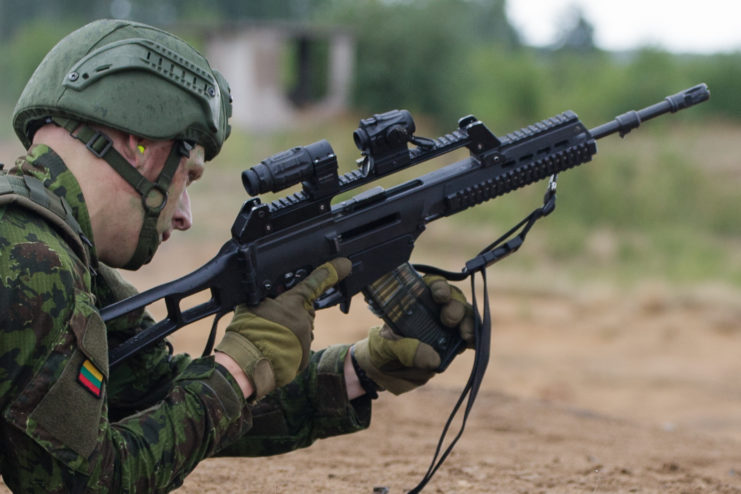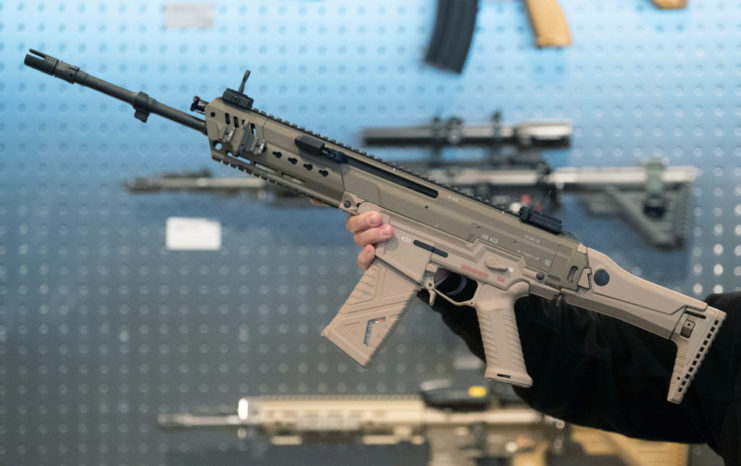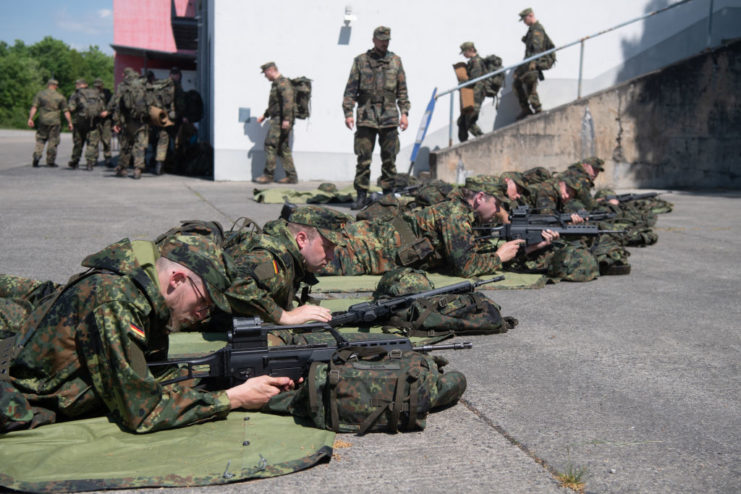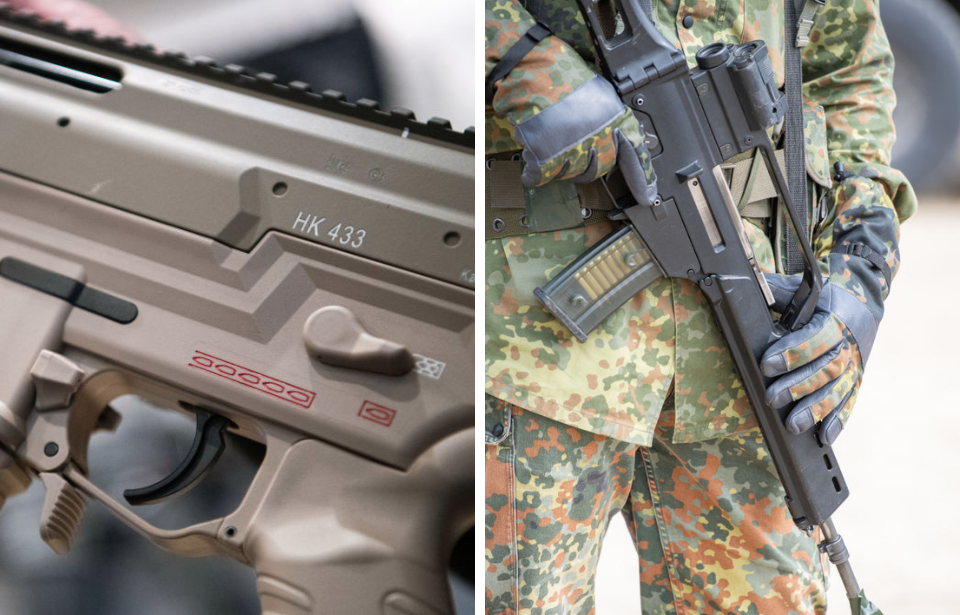German arms manufacturer Heckler & Koch took a unique approach when designing one of their most renowned rifles. The G36 was devised in the 1990s to replace the heavier 7.62×51mm G3 battle rifle. The customizable features and overall engineering of the G36 set the stage for a new generation of military assault rifles.
More recently, a new contender has grabbed the attention of specialists looking for the next innovation in the future of weapons: the HK443, which combines the modular and sleek design of the G36 with the power of the AR-15.
The G36 was a top contender in European infantries
Prior to 2012, the G36 was a popular rifle that saw use across Europe by infantry, special forces, and security forces who count on its reliability. Looking for a lighter and less expensive weapon that could be configured to use the new standard 5.56mm x 45 NATO cartridge, Germany took the already-proven power of gas-operated guns and rotating bolt-action design and fashioned it into a more modern, adaptable weapon that was put into service in 1996.

However, technology has progressed drastically in the last two decades and the G36 was deemed outdated in 2012. It was found to have major accuracy problems once the weapon overheated – triggering the search for a replacement.
Three weapons were put forth to be selected to replace the G36: The Heckler & Koch HK416, Heckler & Koch HK433, and the Haenel MK556. Ultimately the HK416A8 was chosen as the new service rifle beginning in 2022, but the other HK option, HK433, has piqued the interest of weapons experts.
The HK433 is the future of assault rifles
The HK433 rifle, which was designed to possibly replace the G36, features a fusion of various elements from some of the world’s most prolific automatic rifles. The modular and compact HK433 offers two operating concepts to choose from: that of the M16/M4/AR-15 or the G36.

There are also six options for barrel length, ranging from 11 to 20 inches, as well as two color options: black and “flat dark earth.” The design is ambidextrous for both right-handed and left-handed shooters without the need for tools.
It also includes a round counter, foldable and retractable buttstock with adjustable cheek rest, and provides endless opportunities to customize with a range of accessories including training bolt group, bayonet, suppressor, drum magazine, brass catcher, blank firing attachment, and forward grip or bipod.

According to Heckler & Koch, “It doesn’t matter at all whether you are right or left-handed or have trained on a G36 / HK416 weapon system or AR-15 platform: The HK433 is the solution for every scenario imaginable. Maximum functional reliability with intuitive handling combined with maximum modularity, accuracy, and weapon safety.”
The HK433 design is ideal for conflicts fought in urban areas, with the ability to entirely disassemble the weapon in the field without any tools. It can even be charged with the safety still on, giving shooters the ability to prepare for fire almost immediately. Multiple mounting points allow for additional tactical hardware alongside the spacious Picatinny rail. The HK433 has a rate of fire of 700 per minute, only slightly less than the G36’s 750 per min.
More from us: K31: The Swiss Rifle That’s Become a Popular Collector’s Item
Since the US military announced that the SIG Sauer XM5 6.8 x 51mm will be its next-generation infantry rifle – to replace the M4 carbine – it’s uncertain if the HK433 could become another go-to infantry rifle for future US soldiers to use.
